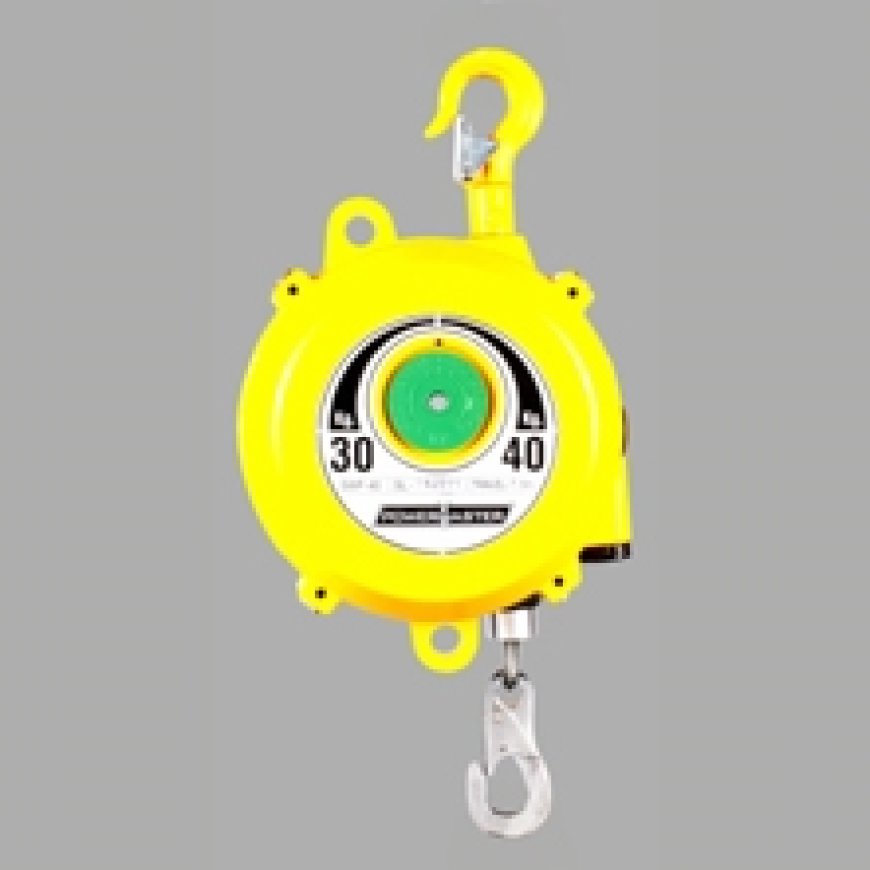Smart Selection: Your Complete Guide to Finding the Right Industrial Spring Balancer

The industrial spring balancers are now a necessary piece of machinery for contemporary assembly and production processes. These mechanical devices reduce operator fatigue and improve workplace efficiency and safety by supporting tools and equipment. When selecting the ideal spring balancer for your specific work environment, many factors need to be carefully taken into account to ensure lifetime and excellent performance.
1. Understanding Weight Capacity Requirements
The foundation of spring balancer selection lies in accurately determining your weight capacity needs. Find out the exact weight of the cables, tools and attachments to be hanging. Whenever choosing a balancer, buy one with a capacity that has a 20 percent load or more than what you actually need. This amount is considered to encompass the dynamic loads, the addition of tools, as well as the variations in the weight.
2. Evaluating Cable Length and Stroke Distance
Cable length determines the working range and flexibility of your spring balancer system. Measure the maximum distance tools need to travel during normal operations. Consider both vertical and horizontal movements in your workspace. Longer cables provide greater flexibility but may create slack issues. Shorter cables offer better control but limit working range. Select the optimal length that balances operational freedom with precision control requirements.
3. Assessing Environmental Conditions and Durability
Depending on where you are operating the environment may affect the performance of the spring balancers and even the life span. Consider such factors as profuse heat, humidity, dust and presence of chemicals. In severe conditions, balancers having covered mechanisms, corrosion proof materials, as well as protective coatings are needed. Standard models can be used in clean areas. Determine if your application requires extra certifications for hazardous regions or explosion-proof grades.
4. Examining Mounting Options and Installation Flexibility
Wall mounting saves ceiling space but limits working angles. Trolley systems offer mobility along tracks. Take into account the mounting locations, operator movement patterns, and the infrastructure of your facility. Select mounting solutions that preserve structural integrity and safety regulations while optimizing efficiency.
5. Analyzing Precision and Control Features
Modern spring balancers offer varying levels of precision and control mechanisms. Basic models provide simple weight support, while advanced units feature fine-tuning capabilities, lock mechanisms, and adjustable tension settings. Evaluate whether your operations require precise positioning, tool parking features, or variable tension control. Consider operator skill levels and training requirements when selecting between manual and automated control systems.
6. Considering Maintenance Requirements and Support
Long-term performance requires regular maintenance and easily accessible technical assistance. Look over the manufacturer's suggestions for lubrication schedules, inspection intervals, and replacement part availability. Think about the skills and training requirements of your maintenance crew. Select balancers with easily accessible service ports and unambiguous maintenance guidelines.
Conclusion
When selecting the best industrial spring balancer, then weight capacity, cable specification, environmental factors, mounting possibilities, control aspects and maintenance requirements must be keenly considered. Consulting these key factors would help you in making sure that your operations would work with maximum efficiency, safety and productivity. Keep in mind that with the right spring balancer one will achieve long-term success.

































